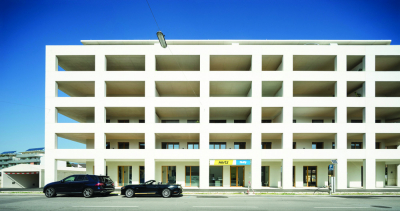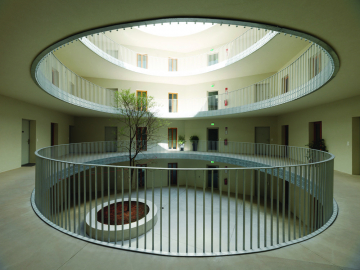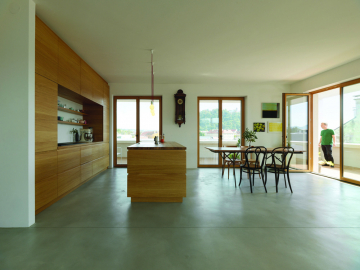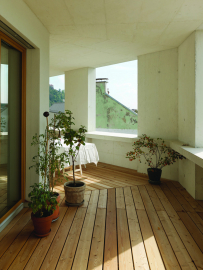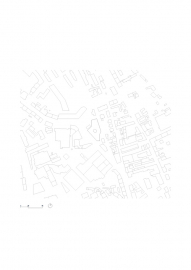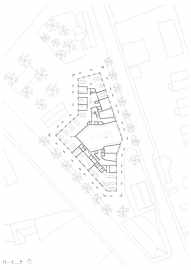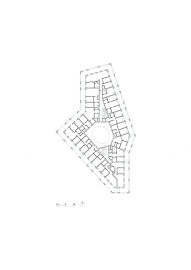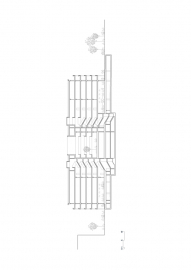Princess Veranda
“Princess Veranda”
A collective housing building with mixed used ground floor level in Graz, Austria
Heterogeneity determines the environment of the collective housing building “Princess Veranda” in the district of Lend in Graz. The prevailing commercial usage is increasingly combined with housing, leading to a dynamic urban development.
In its vivid surrounding, the building is set as a strong but minimalistic landmark and at the same time marks a leading project in the ongoing transformation process of the area.
The irregular floor plan of the building results from the conical shape of the building plot between the streets of Wiener Straße and Grüne Gasse, as well as two existing listed buildings in the north and south of the plot. As a continuation of the tree population starting at the nearby Lendplatz, tree avenues in both streets act as a buffer to the building with the facade jumping back.
By formulating the object as a solitaire, it was possible to generate an urban exterior that surrounds the building. On the ground floor, commercial and gastronomy spaces are situated, while the apartments are planned on the upper floors. In the apartments, a flexible use remains possible due to generously dimensioned room heights. Different apartment sizes and typologies are offered, from the garçonnière to the four-room apartment. The extraordinary geometry of the building results in numerous, differentiated apartment plans.
Two circulation cores, accessible from Grüne Gasse, lead to the apartments, while the units on the ground floor are accessed via a spacious arcade passageway directly from the public urban space.
The use of raw concrete as a facade material and the resulting possibility to dispense with complex facade detailing allows the formulation of a clearly drawn, sculptural house. A natural-looking coloring of the facade is achieved through the use of white cement.
Generously dimensioned loggias in the form of an encircling veranda zone provide the residential units of different sizes with a private outdoor space and at the same time decisively shape the architectural form of the building. An atrium breaks the depth of the solitaire which, as a quiet courtyard, serves as a counterpoint to the busy, urban exterior space.


